Last Updated on July 26, 2024
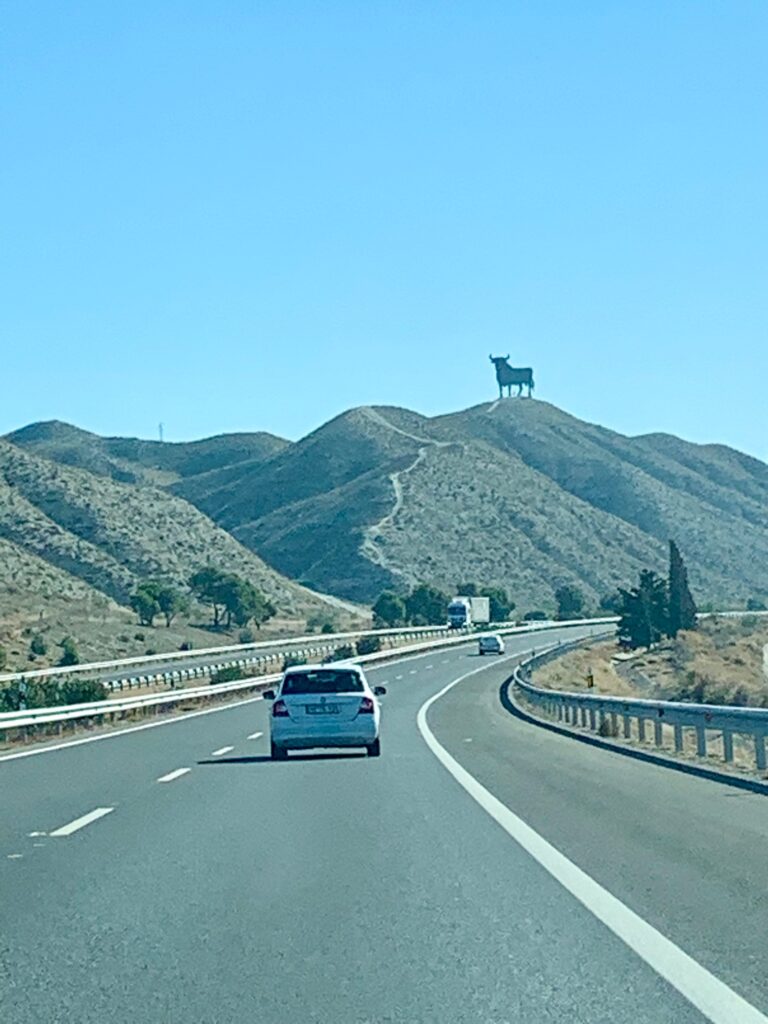

What this Blog is About
This blog describes our experience driving in southern Spain in October – November of 2021 and in the islands of Mallorca and Menorca in March of 2022. Most of the contents of this article is about driving in mainland Spain. There is not much to write about driving in the islands of Mallorca and Menorca as we encountered no issues. In fact, driving in these two islands was very relaxing as there was hardly any traffic on the local roads except for Mallorca MA-1 near the city of Palma.
Driving in Spain is just like driving in the USA where people drive on the right side of the road with speed limits. Spain has a good network of roads and highways. Multi-lane highways are either free (Autovias) or you have to pay a toll (Autopistas). City streets and roads can be very busy, narrow, confusing and downright frustrating to navigate if you are not familiar. Roundabouts and traffic lights are widely used and sometimes together which can be a head scratcher. Hopefully, you will find the information helpful.
Highways and Speed Limits
We actually had a pleasant experience driving the highways of Southern Spain and the islands of Mallorca and Menorca. In southern Spain, we went on a 25+ day exploration that began in Madrid, going eastward to Zaragosa and Barcelona, hugged the coast towards Valencia and Benidorm before turning inland towards Grenada. We hugged the coast one more time towards Nerja, Malaga, Algeciras (near Gilbratar) and Tarife before heading back to Madrid by making stops at Arcos de la Fronterra, Ronda, Zahara de la Sierra, Cordoba, Seville, Toledo and Segovia.
We were mostly on two lane (each direction) divided highways called Autovias. We knew that Autovias are toll-less while Autopistas require a toll. There was a stretch of highway between Barcelona and Valencia that had toll booths but no toll was collected . The overhead highway signs would identify which exit would take us to an Autovia (labeled “A”) or to an Autopista (labeled “AP”). Fortunately, Google Maps labels the Autovias and Autopistas accordingly.


Autopista highways are like US interstates where for the most part, it skirts towns and cities. Autovias would go through towns and cities. Both have 120 km/hr speed limits. We never paid a single toll during our exploration and never felt that the roads were packed or busy. As a matter of fact, it was very enjoyable driving Spain’s highways. It reminded me of driving through I-40 or I-10 through New Mexico and Arizona with 50% less traffic on the road.
City Streets
The only time we had to drive on city streets is to reach our accommodations. Otherwise we try to avoid it as much as possible for three reasons. First, city streets are very busy. Second, some intersections do not have left turns or that roundabouts have traffic lights which makes navigation frustrating for first timers. Last, the streets can be really narrow and finding parking can be painful.
Busy city streets
Spain’s towns and cities are very dense unlike the US where we have suburbs. With dense cities comes more vehicles using the road. We noticed a lot of motorcyclist on city streets. They all seem to weave through traffic in an effort to get on the front line so they are the first to take off when the traffic light turns green. We had to look at both of our side mirrors before we change lanes or before making a turn as there could be a motorcyclist coming up on our rear at any time.
Navigation frustration
When we drove to a Covid testing lab in Madrid from Segovia, what should have been a 30 minute drive after we exited the highway turned into more than an hour. Our Google Maps and Maps.me navigation were not up to par when it comes to taking the correct turns. In some instances, our navigations said to make a left turn when there is no left turn lane. Later we, noticed that some streets have an exit to the right which would then sweep and turn left to intersect with the street we we exited from. This was a very confusing way to make a left turn which is to be on the rightmost side of the road.
Before coming to Spain, we thought that street intersections would either have roundabouts or traffic lights but not both. We were wrong. When we were on streets that were three lanes or more wide, we were surprised to be looking at a traffic light in front of us while going around a roundabout. Not a big deal, just unusual and unexpected.
Narrow streets
We thought that Austria and Italy had narrow streets. Some small towns and even in some streets in Seville have really narrow streets. You can see some of the scrape marks on the wall as shown in the photo below.
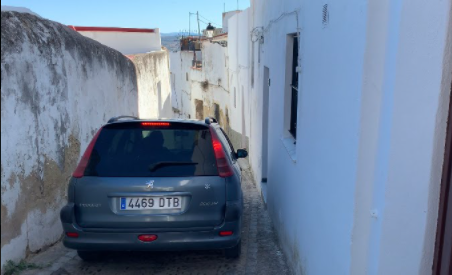

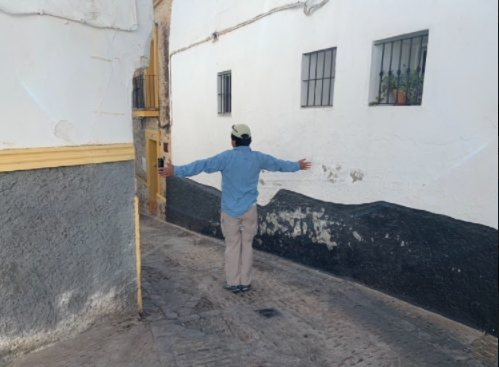

In Seville, we noticed some low profile street barrier that can be really deceiving. We even witnessed a local driver having had to cringe when he heard his fender scraped these low profile barriers.
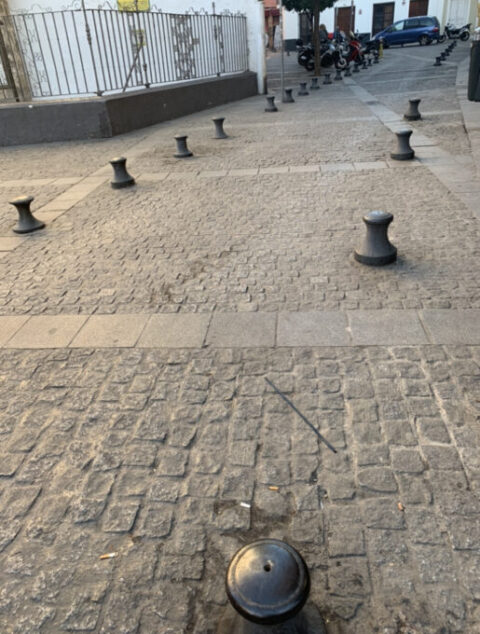

Speed Cameras
We only noticed speed cameras on highways. We did not see any speed cameras in cities and towns. It seems that almost all speed cameras that we came up to had warning signs which was good thing (not unlike Austria where there is no warning at all).
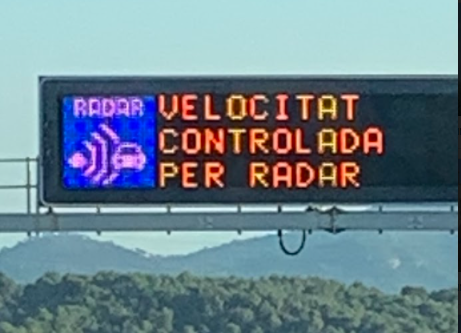

Cyclists in Mallorca
Whether it’s the terrain or the early Spring weather, the winding and mountain roads near the town of Lluc in Mallorca are favored by bicyclists. We passed by countless cyclists on multiple days that we explored the area near the town of Lluc. At times it could be slow going while waiting for a chance to pass a cyclist on Ma-10 or Ma-2130 as the roads are narrow and winding and the straightaway sections are few and far in between.
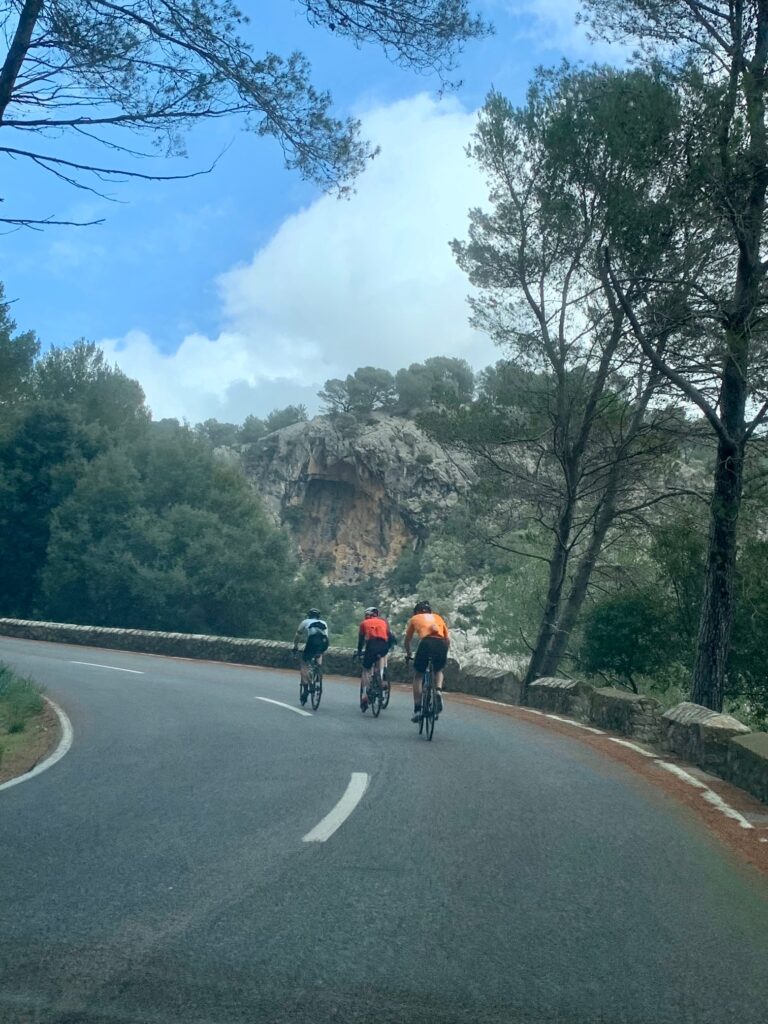

Summary
Driving the highways in Spain is just like driving in the United States. It’s fairly straightforward. Driving in city and town streets can be confusing and nerve racking. City streets can be narrow, almost always busy and there are motorcyclists everywhere. We would avoid driving in cities and towns as much as possible.
Highways are either Autovia or Autopista. Autovia goes through towns and cities but is toll free. These are labeled “A” on Google Maps. Autopistas are interstate like highways, skirting to avoid towns and highways but require a toll. These are labeled “AP” on Google Maps.
Highways have speed cameras but there are also warning signs. It pays (literally) to pay attention to the road signs as you may miss seeing these speed camera warning signs.
Related Readings
Car Navigation. Driving in Austria, Driving in Italy. Driving vs Public Transportation, Lease Vs Rent.
